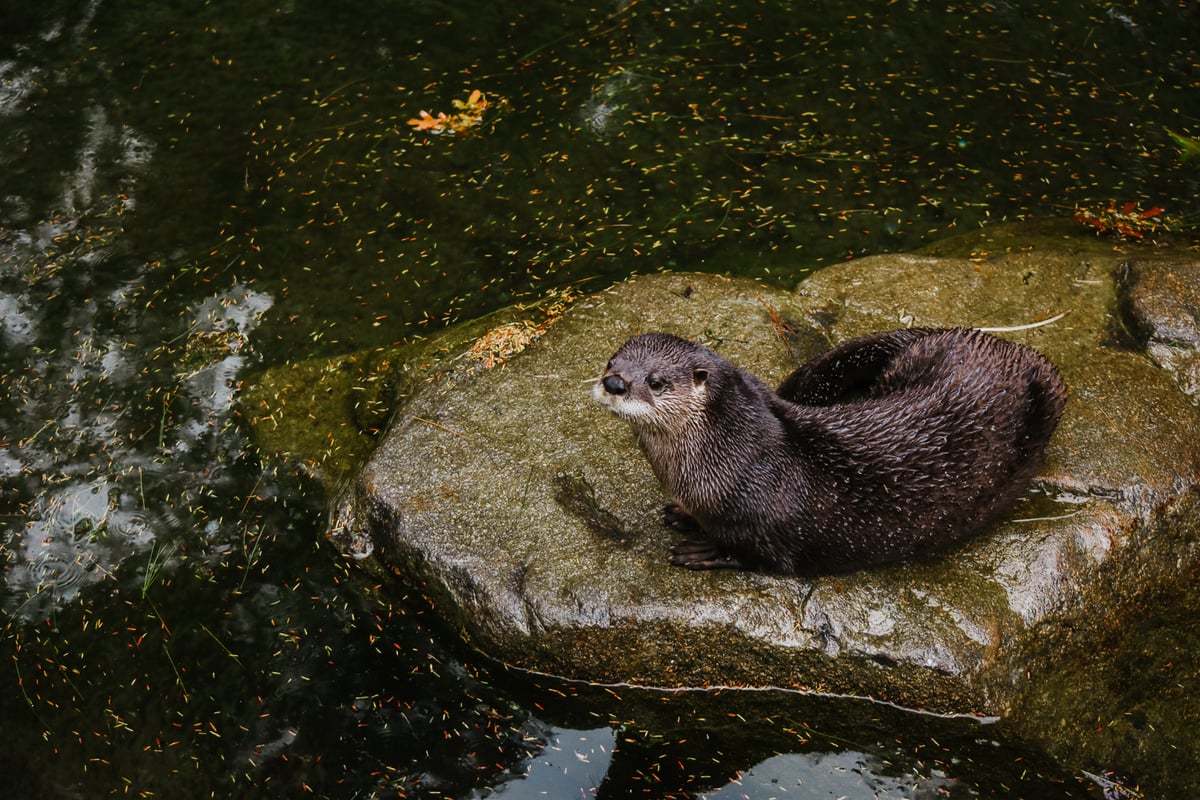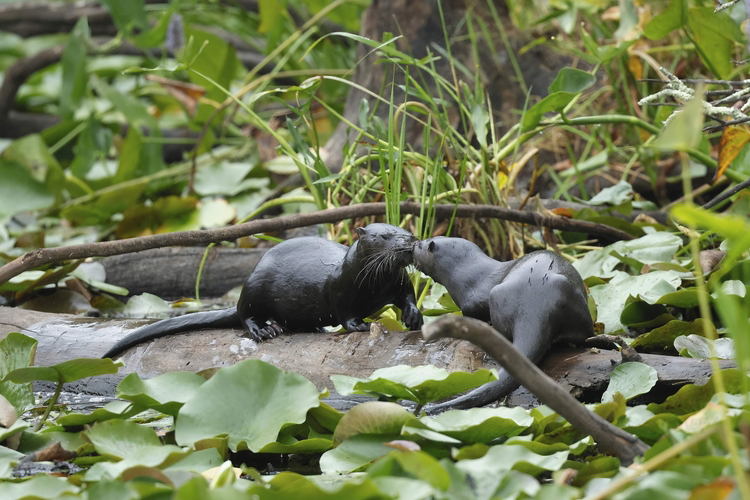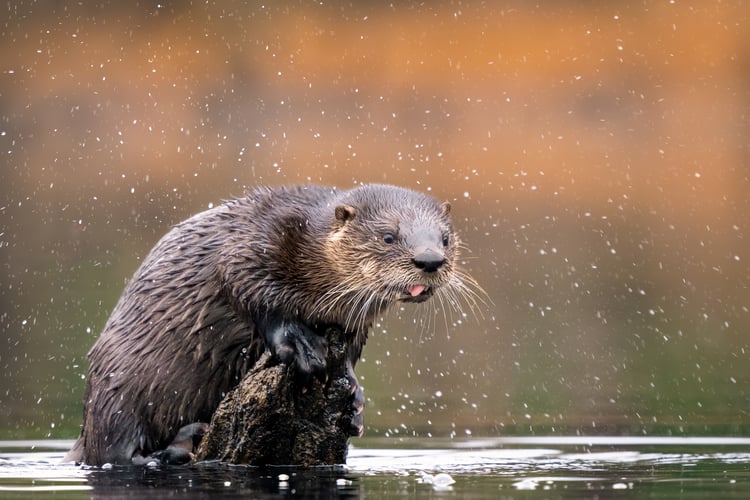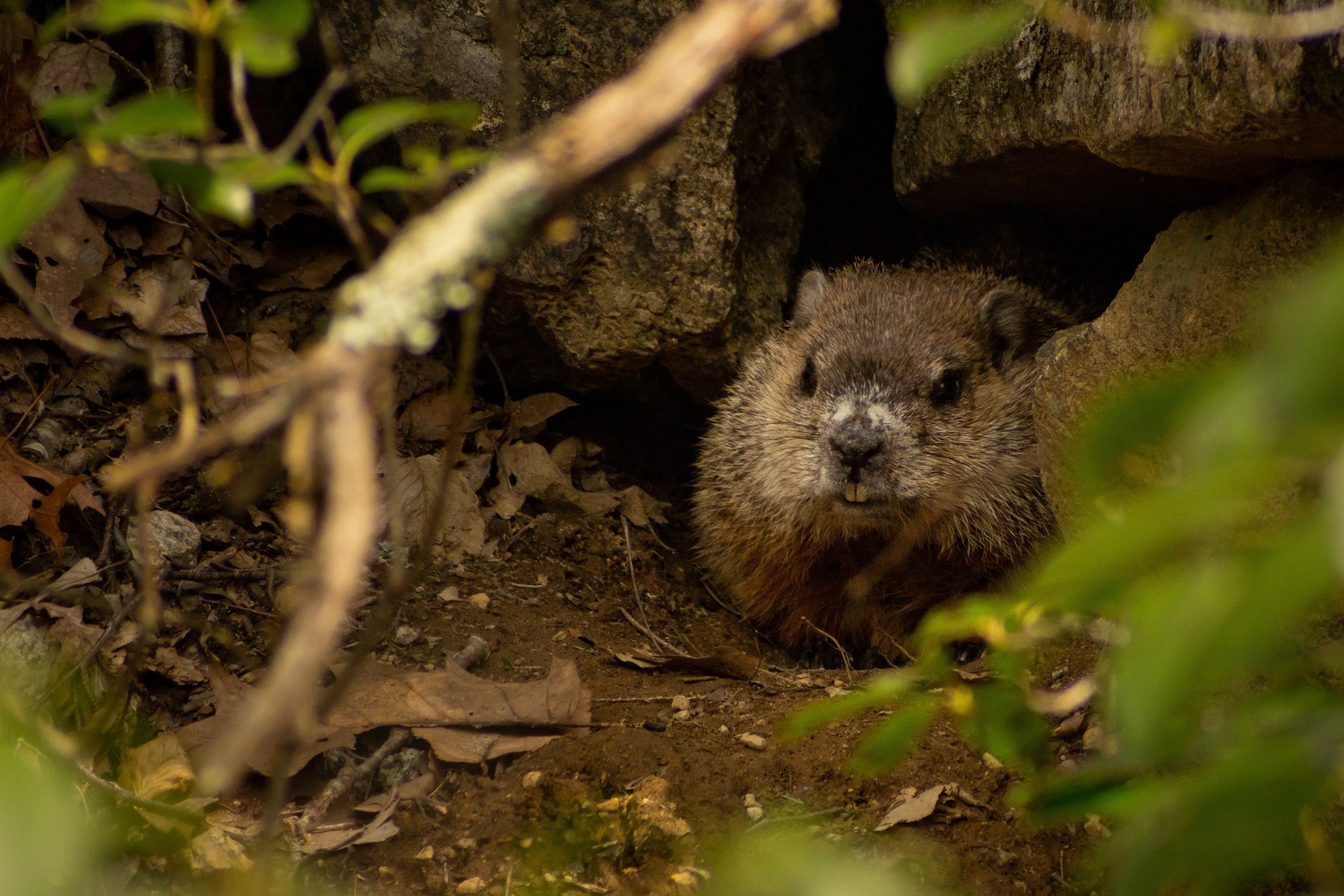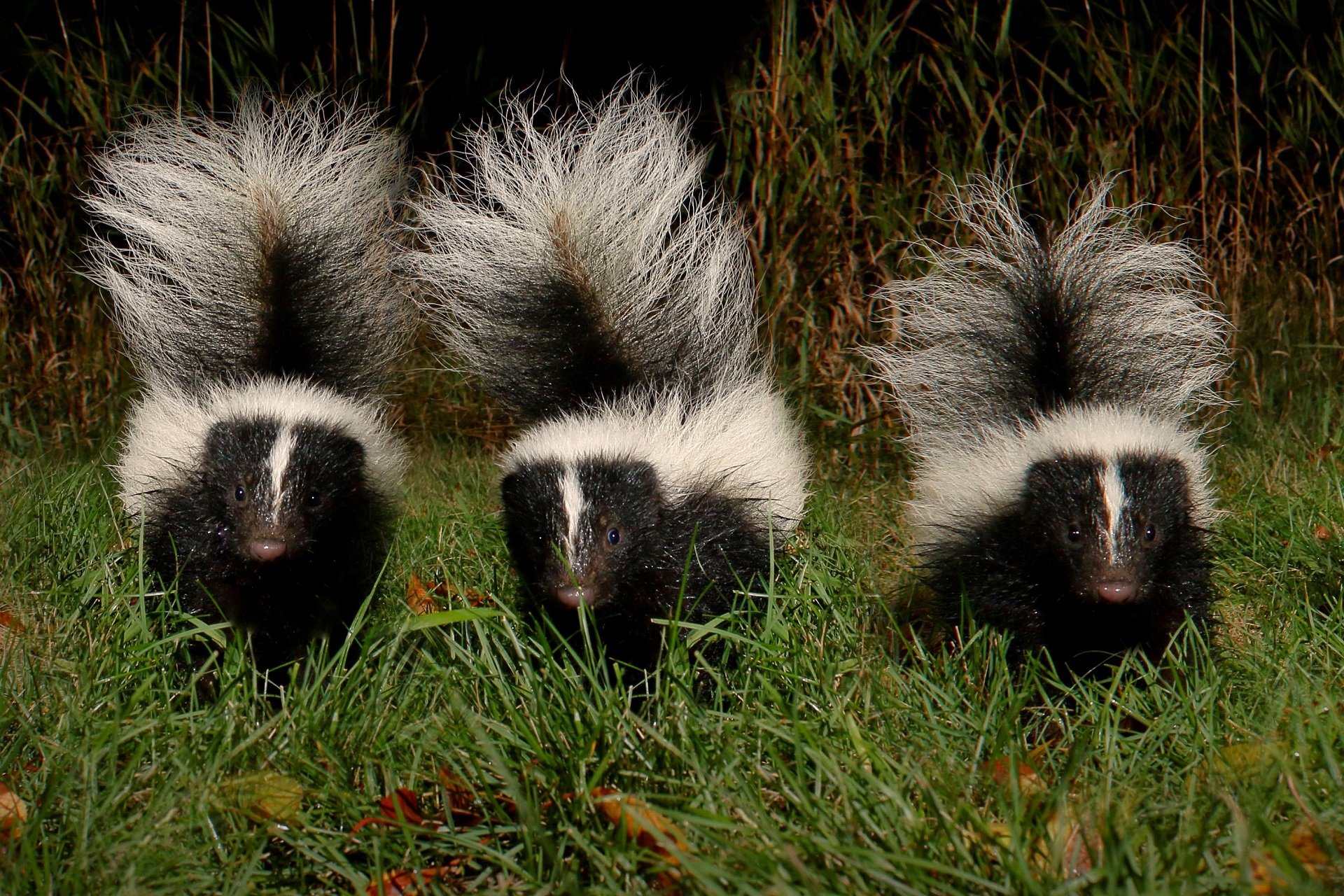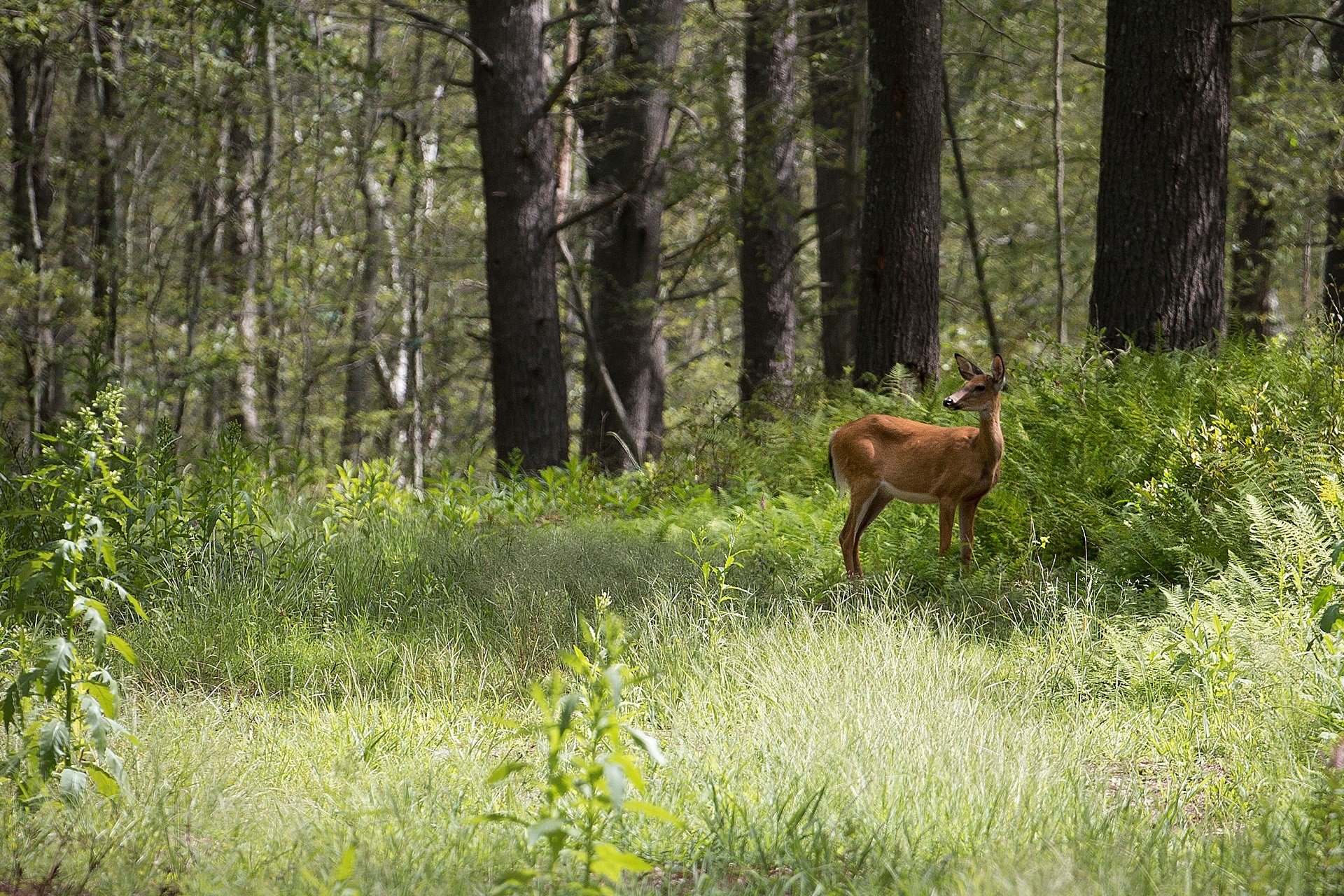Mammals in Massachusetts
North American River Otters
North American River Otters (Lutra canadensis) are the charismatic clowns (and the largest members) of the weasel family, well-known for their playful antics and excellent swimming abilities. They can be found across the continental U.S., near streams, rivers, lakes, and swamps.
Identification
While male and female river otters look similar, males are slightly larger. Their body can measure 35.1 to 51.2 inches, with a tail 11.8 to 19.7 inches long. They are covered in thick, dark brown fur that covers their back and turns to a lighter shade on their chest and face. They can live up to 10 years in the wild.
River otters live in dens built under fallen trees, rocky ledges, logs, or dense bushes near the water. If the den is on moving water or a lake, otters will build tunnels with an opening above the water in warmer weather and just below the ice in winter.
River Otter Behavior
River otters are highly intelligent with tight social bonds. They are great swimmers with their webbed feet and streamlined, muscular bodies. Although they spend most of their time in the water, river otters also play and travel on land.
They communicate with chirps, growls, whistles, and body language. Scent glands near the base of the tail allow river otters to mark their territory.
Their diet consists of fish, crayfish, frogs, mollusks, birds, small snakes and turtles, and aquatic vegetation. Sometimes, river otters work in teams to trap their meal. They use their sensitive whiskers to detect prey within muddy river bottoms.
Breeding
Breeding season usually occurs in March and April. Due to delayed implantation, litters won’t be born until 10 to 12 months later. A litter can have one to five kits, or baby river otters, which are born blind. Kits leave the nest at around 10 weeks, but stay with their parents for one year. Mother river otters will teach her young how to swim, hunt and socialize.
Threats Facing Otters
Humans remain the top predator for river otters. For decades, river otters were hunted and killed for their sleek fur. While many places around the United States have begun to reintroduce and protect river otters, other factors like pollution and habitat destruction still threaten the survival of this species.
Meet the Trailside River Otter
The Blue Hills Trailside Museum is home to a female river otter that was born in captivity and thus can not live in the wild. Her renovated outdoor exhibit, which took almost two years of construction, was built to bring her enclosure up to current animal care standards and present a more naturalistic, engaging environment that supports typical otter behavior and activities.
How Mass Audubon is Helping River Otters
River otters benefit from clean rivers and streams, healthy fish populations, and connected forested habitat. Our efforts to maintain large landscapes and restore inland and coastal river systems will help build a thriving habitat for river otters.
Stay Connected
Don't miss a beat on all the ways you can get outdoors, celebrate nature, and get involved.




